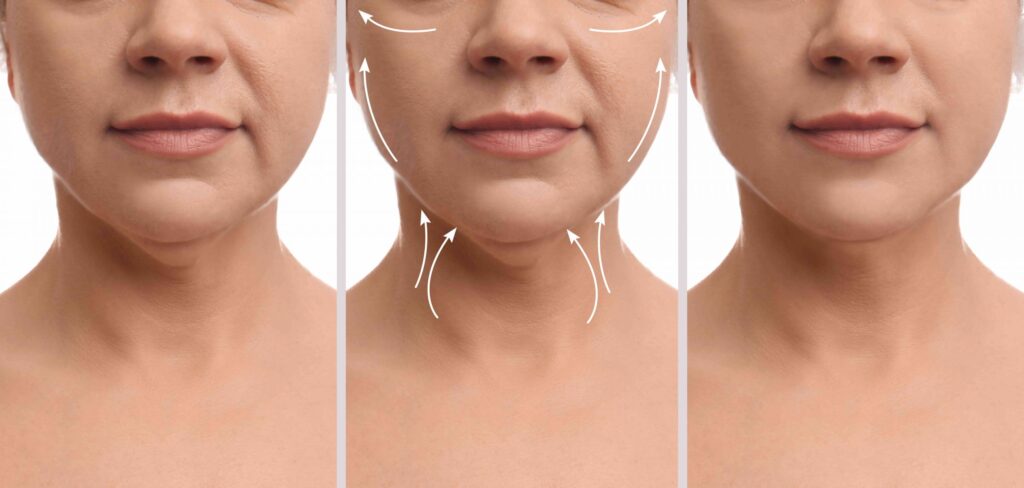Ultrasound liposuction emerges as a modern solution for those aiming to refine their body contours without the invasiveness of traditional procedures. This technique utilizes high-frequency sound waves to target and dismantle fat cells, offering a less aggressive option with reduced recovery time. As an increasingly popular method in the realm of cosmetic enhancements, understanding its mechanisms, benefits, and considerations is essential for individuals seeking effective fat reduction alternatives.
Ultrasound Liposuction Vs. Traditional Methods
Recovery Times
Ultrasound liposuction often leads to quicker recovery. This method uses sound waves to break up fat, which is less invasive than traditional lipo’s physical manipulation. Patients typically resume normal activities sooner.
Traditional methods may require more downtime. The process can be more traumatic for the body, leading to longer healing periods. It’s important for patients to consider their schedules when choosing a procedure.
Fat Removal
Ultrasound technology targets fat deposits precisely. It disrupts only the adipose tissue, sparing other cells from damage.
In contrast, traditional lipo involves a scalpel and suction tool that remove both fat and some surrounding tissues. This difference makes ultrasound liposuction less aggressive on the body overall.
Tissue Impact
The impact on surrounding tissues varies greatly between these two methods. Ultrasound liposuction minimizes harm to nearby structures like blood vessels and nerves, promoting faster healing and reduced bruising.
Traditional techniques are not as selective in what they remove alongside fat cells, affecting more of the lymphatic system and potentially causing greater post-operative discomfort.
- Pros of ultrasound liposuction:
- Quicker recovery time.
- Precise targeting of stubborn fat.
- Less trauma to surrounding tissues.
- Cons of traditional liposuction:
- Longer recovery period.
- Greater potential for collateral tissue damage.
Benefits and Effectiveness of Ultrasound Liposuction
Enhanced Precision
Ultrasound liposuction uses advanced technology to target fat cells. This method allows for greater accuracy in removing unwanted fat. The ultrasound waves specifically break down only the fat cells, sparing surrounding tissues.
Patients benefit from this precision because it minimizes damage to nearby areas. For example, someone looking to remove belly fat can expect a more contoured outcome than with traditional methods.
Reduced Swelling
One significant advantage is the reduction in post-operative bruising and swelling. Traditional liposuction can be quite invasive, leading to longer recovery times.
With ultrasound techniques, patients often experience less trauma during the procedure. This means they can return to daily activities sooner. It’s common for individuals who undergo ultrasound liposuction to report less discomfort following their treatment.
Skin Tightening
Another key benefit is the potential for improved skin tightening results after ultrasound liposuction. As fat is removed, skin may sometimes appear loose or saggy with conventional methods.
However, the heat generated by ultrasound promotes collagen production and tissue coagulation. This naturally leads to tighter-looking skin post-procedure without additional interventions.
Understanding the Ultrasonic Liposuction Procedure
Procedure Steps
The ultrasonic liposuction process begins with a consultation. The doctor talks to you about your goals. They explain the steps. Next, they mark the areas on your body for treatment.

During the session, you get a local anesthetic. This numbs the area but keeps you awake. A small incision is made in your skin. Through this cut, a thin tube called a cannula goes into the fat layer beneath.
Ultrasound Application
The cannula emits ultrasound waves that target fat cells specifically. These waves break down and liquefy fat without harming other tissues.
Once liquified, fat is easier to remove from your body through suction applied via the same cannula or another device designed for extraction.
Candidate Criteria
Not everyone can have ultrasonic liposuction safely. You need good health overall and realistic expectations about results. A stable weight is important too—you should be close to your ideal weight before considering this procedure. Skin elasticity matters as well; it helps avoid sagging post-treatment.
People with certain conditions like heart problems or blood disorders may not be suitable candidates for ultrasonic liposuction due to higher risks involved.
Minimally Invasive Body Contouring with Ultrasound
Small Incisions
Ultrasound liposuction requires smaller incisions than traditional methods. A skilled surgeon uses ultrasonic waves to target fat. This means less scarring for patients.
The use of a cannula, which is a thin tube, allows the ultrasound energy to reach the fat without large cuts. Patients can expect minimal marks post-surgery.
Quick Recovery
Recovery from ultrasound liposuction is faster. There’s less impact on daily life after treatment.
Patients often return to routines sooner than with conventional surgery. They experience minor discomfort and downtime.
Precision Targeting
This procedure excels in targeting stubborn fat areas. It offers precise body contouring with minimal invasiveness.
Areas that are hard to shape through diet and exercise respond well to this technique. The ability of ultrasound energy to focus on specific tissues aids in effective weight loss and skin retraction.
Safety and Risks of Ultrasonic Fat Cavitation
Common Side Effects
Ultrasonic liposuction uses ultrasonic energy to target fat. This process can cause side effects. Swelling, bruising, and pain are typical after the procedure. Most patients experience these to some degree.
These symptoms usually fade within a few days or weeks. Drinking water helps flush out the disrupted fat cells faster.
Serious Complications
Although rare, serious risks exist with ultrasound liposuction. These include skin burns from the ultrasonic energy and blood clots which could lead to more severe issues if not treated promptly.
Infection is another potential risk, though following post-procedure care reduces this chance significantly.
Qualified Professionals
Choosing an experienced professional is crucial for safety. They know how to use the technology correctly and minimize complications.
Patients should verify their provider’s credentials before undergoing treatment to ensure they’re qualified in ultrasonic liposuction techniques.
Researching reviews and results from previous patients can also provide insight into a professional’s expertise.
Cost Considerations in Ultrasonic Liposuction
Price Factors
The cost of ultrasonic liposuction can vary widely. Several factors affect the price. The expertise of the surgeon and geographic location are significant influencers. Complexity and size of the area being treated also play a role.
Hospital or facility fees may apply. These costs cover equipment, staff, and other operational expenses. Pre- and post-operative care might incur separate charges as well.
Long-Term Value
Comparing long-term costs between ultrasound and traditional liposuction is crucial. Ultrasound liposuction may be more cost-effective over time for some patients.
Traditional liposuction could require additional treatments to achieve desired results, leading to higher cumulative expenses. In contrast, ultrasonic methods might offer better precision with potentially fewer follow-up procedures needed.
Insurance Aspects
Insurance coverage for cosmetic procedures like ultrasonic liposuction is generally limited.
Most insurance plans do not cover elective cosmetic surgeries unless medically necessary. It’s important to consult with your insurance provider before proceeding.
Post-Operative Care for Enhanced Recovery
Healing Guidelines
After ultrasound liposuction, proper care is crucial. The first month post-op is often the most critical for healing. Patients are advised to follow a set of guidelines to ensure optimal recovery.
Patients should rest adequately but also engage in light activities such as walking. This helps reduce swelling and prevents blood clots. However, strenuous exercise must be avoided during the initial weeks. Wearing compression garments is recommended to support the treated areas and minimize bruising.
Activity Restriction
The balance between rest and activity is key during recovery. Specific restrictions help safeguard against complications.
For example, patients should not lift heavy objects or participate in high-impact workouts right after treatment. It’s best to gradually reintroduce normal activities based on comfort levels and healthcare provider advice.
Monitoring Signs
Monitoring one’s body post-procedure can prevent issues from escalating.
Patients need to watch for signs that could indicate problems, like excessive swelling, pain, or unusual discharge at the incision sites. If these symptoms occur, contacting a healthcare provider promptly ensures timely intervention.
Nurse Tani often emphasizes excellent care by advising patients about potential red flags that warrant medical attention—ensuring great care throughout recovery.
Real-Life Results: Patient Testimonials and Experiences
Satisfaction Levels
Patients often report high satisfaction levels after undergoing ultrasound liposuction. The procedure’s effectiveness in fat reduction contributes to this positive outcome. Many patients describe feeling more confident with their body contour post-procedure.
Most individuals experience a significant improvement in the treated areas. They share stories of fitting into clothes better and receiving compliments on their new figure. However, it is important for patients to have realistic expectations before the procedure.
Body Contour
The changes in body contour are notable among those who’ve had ultrasound liposuction. Patients commonly highlight how certain areas, like the abdomen or thighs, appear smoother and more defined.
Visible results can take some time to manifest fully due to swelling and healing processes. Typically, clients start observing improvements within weeks but may continue to see progress for several months.
Result Timeline
Understanding when visible results will appear helps set patient expectations correctly. After proper post-operative care, many report seeing initial changes as early as four weeks post-procedure.
Full results usually become apparent after about three to six months as the body naturally eliminates disrupted fat cells. It’s crucial that patients follow all recovery guidelines provided by their health professional for optimal outcomes.
Summary
Ultrasound liposuction emerges as a modern alternative to traditional fat reduction methods, offering benefits such as minimally invasive procedures and potentially quicker recovery times. Delving into the intricacies of ultrasonic liposuction, from its effectiveness to safety concerns and cost considerations, provides a comprehensive understanding for those considering this option. Patient testimonials add a personal dimension to the clinical data, allowing prospective clients to gauge real-life outcomes.
As individuals navigate their body contouring choices, it is crucial to consult with certified medical professionals who can tailor treatments to specific needs. For readers seeking to explore ultrasound liposuction further or ready to take the next step towards achieving their desired physique, reaching out to a reputable clinic is recommended. The journey to enhanced body confidence could begin with an informed conversation about the possibilities that ultrasound liposuction presents.
Frequently Asked Questions
What is the difference between ultrasound liposuction and traditional liposuction?
Ultrasound liposuction uses sound waves to liquefy fat, whereas traditional methods physically remove solid fat.
How effective is ultrasound liposuction compared to other methods?
Ultrasound liposuction can be more effective in targeting localized fat deposits and may result in smoother outcomes.
What does the ultrasonic liposuction procedure involve?
The procedure involves using a specialized device that emits ultrasound waves to break down fat cells before removal.
Is ultrasound liposuction considered minimally invasive?
Yes, it’s less invasive than traditional lipo, involving smaller incisions and potentially shorter recovery times.
Are there risks associated with ultrasonic fat cavitation?
As with any surgical procedure, risks include infection, bruising, or numbness but are generally lower compared to conventional lipo.
How do costs of ultrasonic versus traditional liposuction compare?
Ultrasonic procedures might cost more due to advanced technology used but vary based on treatment scope and geographic location.
What post-operative care is required after ultrasound liposuction for optimal recovery?
Post-op care includes wearing compression garments, avoiding strenuous activity, and following all medical advice given.










